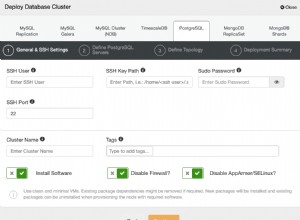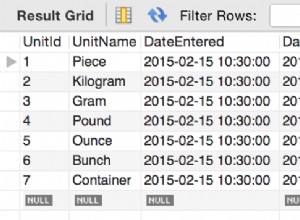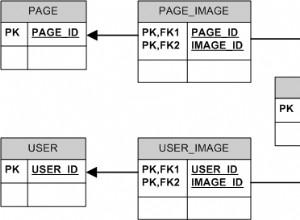Możesz użyć klauzuli output z instrukcją merge, aby uzyskać mapowanie między identyfikatorem źródłowym a identyfikatorem docelowym. Opisane w tym pytaniu. Korzystanie merge..output, aby uzyskać mapowanie między source.id i target.id
Oto kod, który możesz przetestować. Używam zmiennych tabel zamiast prawdziwych tabel.
Ustaw przykładowe dane:
-- @A and @B is the source tables
declare @A as table
(
id int,
FK_A_B int,
name varchar(10)
)
declare @B as table
(
id int,
visible bit
)
-- Sample data in @A and @B
insert into @B values (21, 1),(32, 0)
insert into @A values (1, 21, 'n1'),(5, 32, 'n2')
-- @C and @D is the target tables with id as identity columns
declare @C as table
(
id int identity,
FK_C_D int not null,
name varchar(10)
)
declare @D as table
(
id int identity,
visible bit
)
-- Sample data already in @C and @D
insert into @D values (1),(0)
insert into @C values (1, 'x1'),(1, 'x2'),(2, 'x3')
Skopiuj dane:
-- The @IdMap is a table that holds the mapping between
-- the @B.id and @D.id (@D.id is an identity column)
declare @IdMap table(TargetID int, SourceID int)
-- Merge from @B to @D.
merge @D as D -- Target table
using @B as B -- Source table
on 0=1 -- 0=1 means that there are no matches for merge
when not matched then
insert (visible) values(visible) -- Insert to @D
output inserted.id, B.id into @IdMap; -- Capture the newly created inserted.id and
-- map that to the source (@B.id)
-- Add rows to @C from @A with a join to
-- @IdMap to get the new id for the FK relation
insert into @C(FK_C_D, name)
select I.TargetID, A.name
from @A as A
inner join @IdMap as I
on A.FK_A_B = I.SourceID
Wynik:
select *
from @D as D
inner join @C as C
on D.id = C.FK_C_D
id visible id FK_C_D name
----------- ------- ----------- ----------- ----------
1 1 1 1 x1
1 1 2 1 x2
2 0 3 2 x3
3 1 4 3 n1
4 0 5 4 n2
Możesz przetestować kod tutaj:https://data.stackexchange.com/stackoverflow/q/101643/using-merge-to-map-source-id-to-target-id




